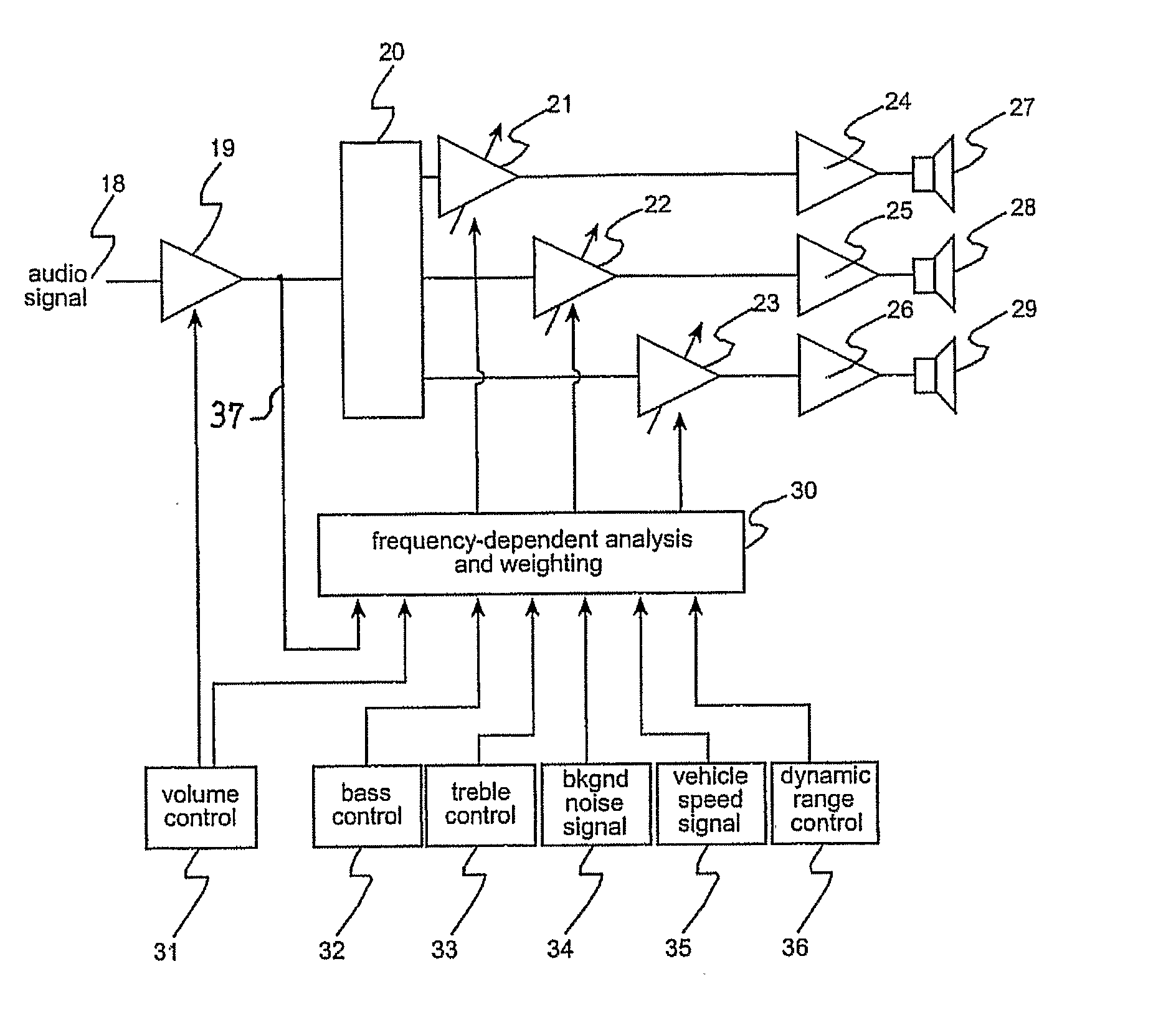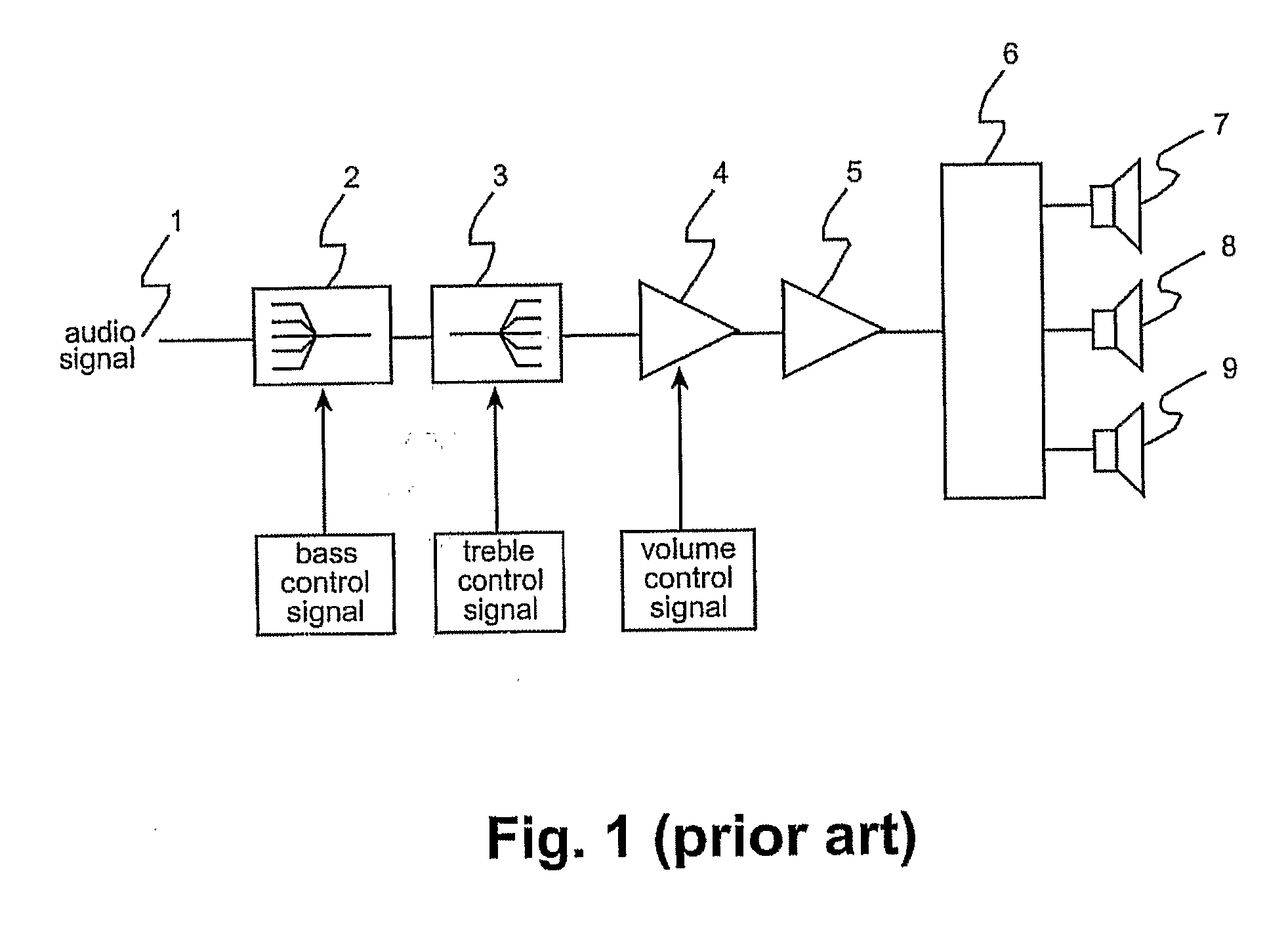Speed- and User-Dependent Timbre and Dynamic Range Control Method, Apparatus and System for Automotive Audio Reproduction Systems
a dynamic range and control method technology, applied in tone control, transducer casings/cabinets/supports, electrical apparatus, etc., can solve the problems of phase response that has detrimental effects on the reproduced audio signal, degraded audio quality of traditional systems, and audible phase shift caused by these filters
- Summary
- Abstract
- Description
- Claims
- Application Information
AI Technical Summary
Benefits of technology
Problems solved by technology
Method used
Image
Examples
Embodiment Construction
[0049] With reference to FIG. 1, there is shown a traditional timbre-adjustment device (tone control) of a type well-known within the field of audio reproduction techniques for driving a passive loudspeaker. An audio signal is provided at an input terminal 1 to a bass control unit 2 followed by a treble control unit 3. The characteristics of these control units are determined by gain parameters provided to the two shelving filters used in these control units. The gain characteristics are indicated in the units 2 and 3 in FIG. 1 in a schematic manner. The output signal from the treble control unit is provided to a power amplifier 5 via a gain control 4, controlling the overall gain of the system. The output of the power amplifier is connected to a frequency crossover network 6. The frequency band-limited output signals from the crossover device are individually connected to loudspeakers 7, 8, and 9.
[0050] As mentioned in the summary of the invention, a drawback of this implementatio...
PUM
 Login to View More
Login to View More Abstract
Description
Claims
Application Information
 Login to View More
Login to View More - R&D
- Intellectual Property
- Life Sciences
- Materials
- Tech Scout
- Unparalleled Data Quality
- Higher Quality Content
- 60% Fewer Hallucinations
Browse by: Latest US Patents, China's latest patents, Technical Efficacy Thesaurus, Application Domain, Technology Topic, Popular Technical Reports.
© 2025 PatSnap. All rights reserved.Legal|Privacy policy|Modern Slavery Act Transparency Statement|Sitemap|About US| Contact US: help@patsnap.com



